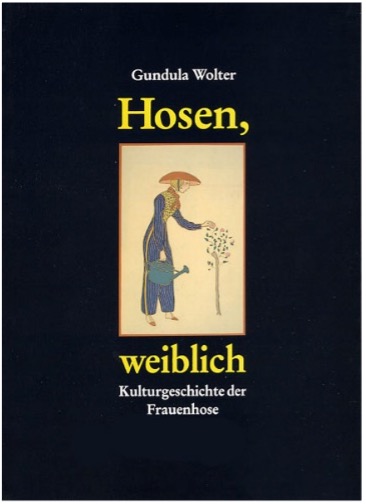
An updated and expanded new edition is in the works. > Please inform me when the new edition is available!
About the book
If you confront passers-by with the question whether women are entitled to wear trousers, you earn uncomprehending looks, astonishment, laughter: "You can see that!" or "Of course. Why do you ask?"
And yet this seemingly self-evident right is only recent. The "male trouser privilege" was undisputed in our culture for many centuries, and women who assumed "a right to trousers" were the great exception. Symbolic appropriation of trousers by women fighting male supremacy or turning domestic power relations on their head was a popular motif in Europe from the late Middle Ages until the end of the 18th century to visualise patriarchal power structure and its questioning. Relics from this phase of exclusively male connotations of the garment can still be found in today’s language, demonstrating that until recently trousers were not just trousers but stood for men and their social positioning. Motto: He who wears the trousers has the say, or, more emphatically: "Het de Fru de Buxen an, is de Mann en Dummerjahn!” (If the woman wears the trousers, the man is a fool).
This monograph deals with the question of when, why and in which way women in Western Europe and North America appropriated what is considered the most conspicuous clothing attribute of men to this day, and the resistance that had to be overcome in the process. The focus is not only on interesting facts about clothing history, but above all on the determinants that played a decisive role in making trousers what they are today: a garment for women and men that can no longer be precisely assigned to one gender.
The book is thus analysing a subject that is particularly significant for the changes in gender role allocation. The question is asked why women took men's dress as a model and to what extent this appropriation was connected to women's emancipatory demands. What advantages did women expect from an approximation to male dress behaviour? What were the consequences of adopting the distinguishing features of the other sex, and what new distinguishing features replaced the old ones? Or does the gender category lose relevance, does differentiation by gender even become superfluous?
The publication is based on research into the history of women's trousers, for which the author was awarded a doctorate from the Free University of Berlin in the Department of History/Art History in 1993.